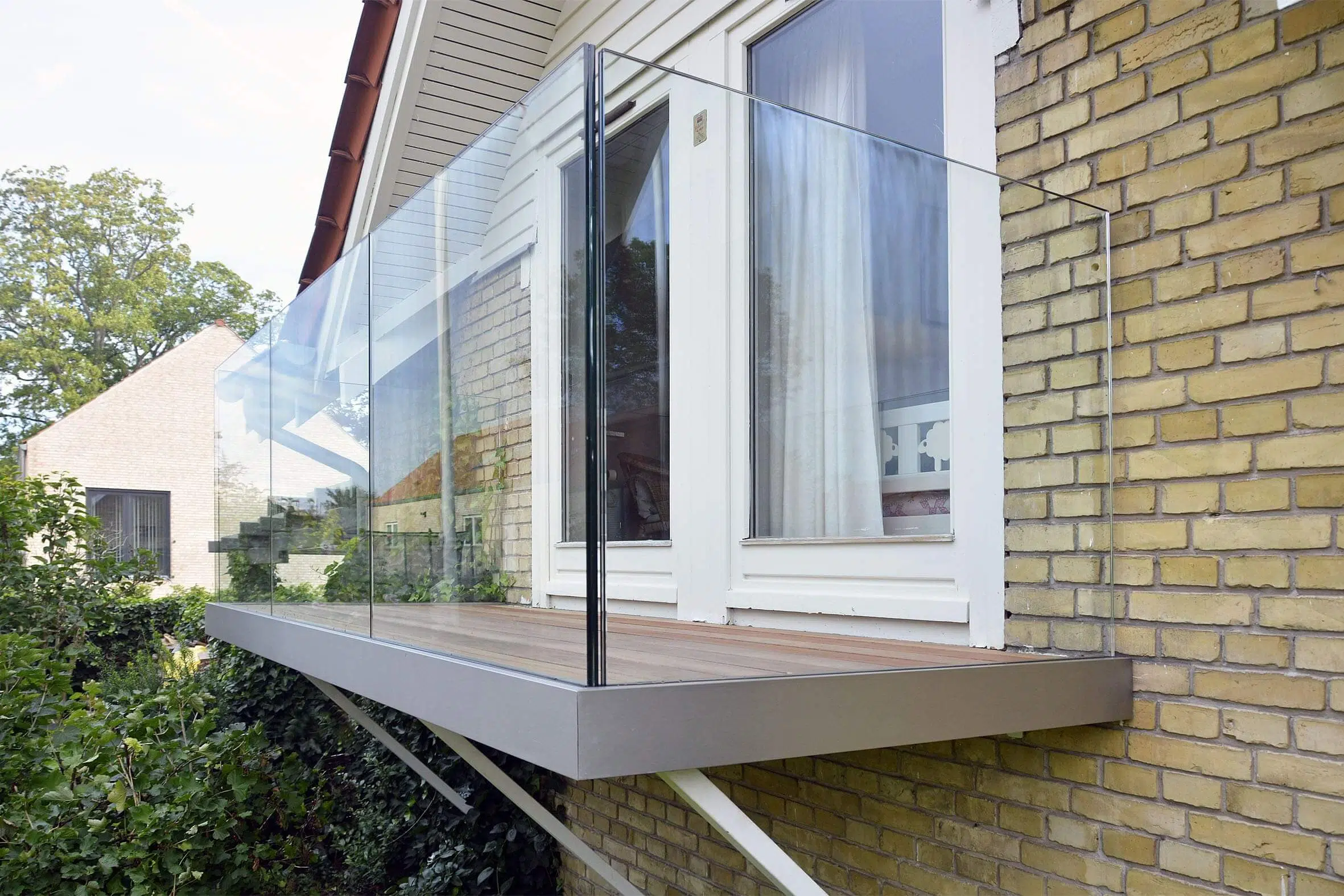3D Configurator: A Revolutionary Tool for Glass, Ceramics, and Concrete Manufacturers
Discover how glass, ceramics & concrete are used in modern buildings & how companies in this industry can modernize sales with a 3D configurator.

The use of building materials such as glass, ceramics, and concrete can be traced back to ancient times, and they remain integral components in the construction of modern corporate buildings. From the ceramic tiles in bathroom spaces to the automotive glass on car windshields, these materials play a critical role in the products we encounter daily.
However, there is an opportunity for the companies in this industry to modernize their approach to client meetings, sales, and product sampling. The digitization of many other sectors has introduced new software and distribution channels that streamline sales and boost revenue.
Manufacturers can take advantage of this trend by implementing a 3D product configurator. By offering customers the ability to personalize their products in a new and interactive way, companies can improve the customer experience and increase revenue.
Future of Construction: A 10-Year Outlook for the Glass, Ceramics, and Concrete Industry
The glass, ceramics, and concrete industry is a significant global player, with heavy reliance in both road and building construction. As demand for these products continues to grow, so too does the opportunity for innovation and advancement within the industry.
Growth in Construction Means Opportunities for Glass, Ceramic, Concrete
One of the driving factors behind this growth is the growing popularity of glass ceramics, which are increasingly being used to replace conventional materials due to their superior technical qualities such as heat resistance, lightweight nature, and cost-effectiveness. This trend is particularly prominent in the building and construction sector, where industry growth is projected at a CAGR of 10+% between 2022 and 2027.
The U.S. building and construction industry is also experiencing robust growth, with a value of almost $1.6 trillion and projections for reaching over $2 trillion by 2025. The formation of a quadrilateral economic forum between India, the United States, and the United Arab Emirates, which focuses on infrastructure development, serves to further bolster the growth prospects of this industry.
The building and construction industry’s growth, coupled with growing demand for glass-ceramics and other advanced materials, will drive the continued expansion of the industry in the years to come.
Asia-Pacific: Next Frontier for Glass, Ceramic, and Concrete Manufacturers
The Asia-Pacific region is rapidly asserting its dominance in a variety of markets, including the automotive OEM market, the polyurethane foam market, and the building and construction market. The glass-ceramics and concrete industry is no exception.
One key driver of this trend is the large and growing construction sector in China, which has significant demand for ceramic inks. Additionally, the increasing demand for glass-ceramics in the Asia-Pacific region is driven by rising usage in key developing nations such as India, China, and Indonesia.
The glass, ceramics, and concrete industry in the Asia-Pacific region is expected to see strong growth in the coming years as demand for these materials continues to increase in major developing nations.
IIoT and Industry 4.0 for Glass, Ceramics, Concrete
The Industrial Internet of Things (IIoT) involves the integration of intelligent sensors and actuators to enhance the efficiency, sustainability, safety, and traceability of industrial and manufacturing operations.
Many companies are beginning to adopt the IIoT in order to improve their operations and increase efficiency. This is particularly notable in concrete and cement plants, where the integration of IoT technology is becoming more and more common. As the industry becomes more connected, companies can improve their operations and increase efficiency by leveraging IoT technology to gain new insights into their manufacturing processes, increase operational visibility and control, and optimize performance.
The Dominance of Lithium-Aluminum-Silicate (LAS) in the Glass, Ceramics, and Concrete Industry
In terms of composition, the lithium-aluminum-silicate (LAS) segment held the largest share of the worldwide glass-ceramics market in 2020. And it is anticipated to keep the top spot throughout the forecast period of 2021-2030.
This is a result of the LAS material's exceptional mechanical toughness and capacity to withstand frequent and rapid temperature changes up to 800-1000 °C. These properties make LAS an ideal material for a wide range of industrial applications. Its strength, durability, and thermal stability make it an attractive option for manufacturers, explaining its continued dominance in the market.
Revolutionizing Online Sales with a 3D Product Configurator
As the manufacturing industry continues to thrive and evolve, the importance of utilizing a top-notch product configurator, such as Salsita 3D Configurator, is becoming increasingly apparent. The ability to offer flexible, personalized product options to clients through a user-friendly 3D configurator will be a vital tool for businesses in this industry that wish to stay competitive and meet the demands of their customers.

Customizable Products for Personalized Experience
New research from McKinsey shows that companies that excel in personalization can expect to see a 40% increase in revenue compared to average companies. The glass, ceramics, and concrete manufacturing industry is no exception. With the integration of a 3D product configurator, customers in this industry can enjoy a highly personalized experience, allowing them to visually interact with a product and make custom changes such as size, length, width, color and even control cost by selecting cheaper material before making a purchase. This level of customization has the potential to revolutionize the way we think about product design and purchasing in the manufacturing industry.
Elevating Customer Satisfaction
Creating an exceptional customer experience is crucial for businesses. As highlighted in the Zendesk Customer Experience Trends Report 2022, a poor customer experience can result in a significant loss of business, with 61% of customers willing to switch to a competitor.
To address this challenge, companies in this industry can leverage the power of a reliable 3D product configurator. By offering a 360-degree product visualizer, customers can not only get a realistic view of the product but also make their own customizations online, without the need for face-to-face meetings or physical product inspections.
By providing an interactive, virtual product customization experience that enhances customer satisfaction and streamlines the purchasing process, companies can expect to see an increase in sales conversion and a boost in ROI. In fact, according to research, companies that do well at personalization generate 40% more revenue than average companies.
Reduced Negative Feedback
For a manufacturer of products for the housing and construction industries, it is essential to minimize the likelihood of negative reviews. One way to achieve this is by implementing a 3D product configurator.
This powerful tool empowers customers to make informed decisions based on their personal preferences, such as glass size or thickness. Additionally, it allows them to perform feasibility checks prior to making a purchase. By providing customers with greater control over their choices, the risk of dissatisfaction and negative reviews is significantly reduced.
Fewer Returns
Reducing the rate of product returns is a vital concern. One effective solution is incorporating interactive 3D visualization, along with a user-friendly interface and 360-degree views, into the product selection process. This allows clients to thoroughly examine products from every angle, and make modifications according to their personal taste, thus minimizing dissatisfaction and returns.
Minimizing Error
Minimizing errors during production is crucial to maintaining quality and customer satisfaction. One powerful solution is implementing a 3D product configurator. This tool allows manufacturers to gather detailed information on client preferences, and to work with precision and care to satisfy them. With this technology, companies can significantly reduce the risk of errors and ensure product excellence.
Unlock the Potential of Personalized Sales with the Salsita 3D Configurator
Salsita 3D Configurator is a powerful tool designed to improve product customization and enhance the customer experience for companies in the manufacturing industries. As an experienced web and mobile app agency, Salsita understands the importance of personalization in today's market.
By leveraging the power of 3D product configuration, we enable companies like Easysteel, a leading metal fabrication firm, to improve their customer experience through the ability to view and customize products prior to purchase. If you want to join the ranks of industry leaders like Easysteel and improve your company's sales and customer satisfaction, you should try out the Easysteel configurator we implemented. It's a great example of our capabilities.

Alternatively, you can visit our website to discover more about the benefits of product customization and personalization with Salsita 3D Configurator and take the first step towards exceptional results.


